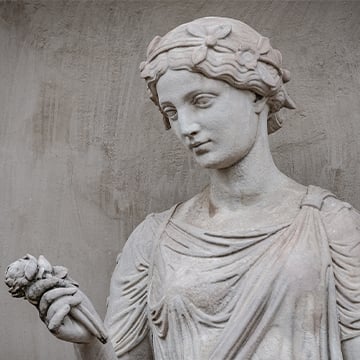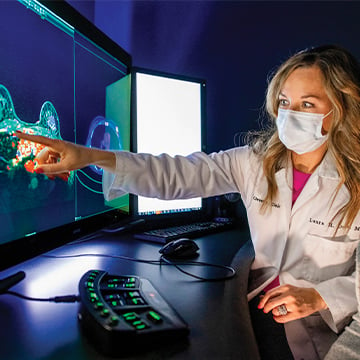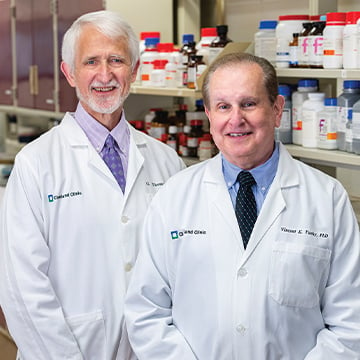THEN NOW NEXT
Breast Cancer
By Jill Stefancin

Women of yesteryear were no strangers to breast cancer.
Photo: Getty Images
THEN
Historians have found accurate descriptions of breast cancer as far back as ancient Egypt and Greece. With the development of anesthesia, radical mastectomy as treatment was introduced in the late 1800s. In 1926, British researcher Janet Elizabeth Lane-Claypon led an unprecedented study that identified breast cancer risk factors. The mammogram was introduced as a diagnostic tool in 1962. Fifteen years later, tamoxifen was approved to treat metastatic breast cancer. By the early 1990s, the ubiquitous pink ribbon had become breast cancer’s symbol of support.

Better diagnostic tools provide better patient outcomes.
Photo: Lisa DeJong
NOW
Early detection remains key. Oncologists are using the latest diagnostic tools to provide better outcomes for patients. Determining cancer types and subtypes ensures tailored treatments are as effective as possible with the fewest possible side effects.
Surgery is the primary breast cancer treatment, but providers may combine it with treatments such as chemotherapy, radiation, immunotherapy, hormone therapy and targeted therapy, which focuses on the genetic changes that turn healthy cells into cancer cells.

Dr. G. Thomas Budd, left, and Dr. Vincent Tuohy
Photo: Shawn Green
NEXT
In the U.S. this year, 1 in 8 women and people assigned female at birth will learn they have breast cancer. Data show that overall, 91% of people with breast cancer were alive five years after diagnosis. Nearly 4 million people are breast cancer survivors.
The late Vincent Tuohy, PhD, who held the Mort and Iris November Distinguished Chair in Innovative Breast Cancer Research at Cleveland Clinic’s Lerner Research Institute, spent decades researching a vaccine for triple-negative breast cancer (TNBC), the most aggressive and lethal form of the disease.
Based on Dr. Tuohy’s preclinical research — funded in part by philanthropic gifts from more than 20,000 people — Cleveland Clinic’s breast cancer vaccine is in a phase 1b study.
G. Thomas Budd, MD, an oncologist at Cleveland Clinic Cancer Institute and the trial’s lead investigator, says the long-term hopes for the vaccine are not only to reduce the risk of recurrence in patients with TNBC, but also to decrease the risk of getting TNBC in the first place.
